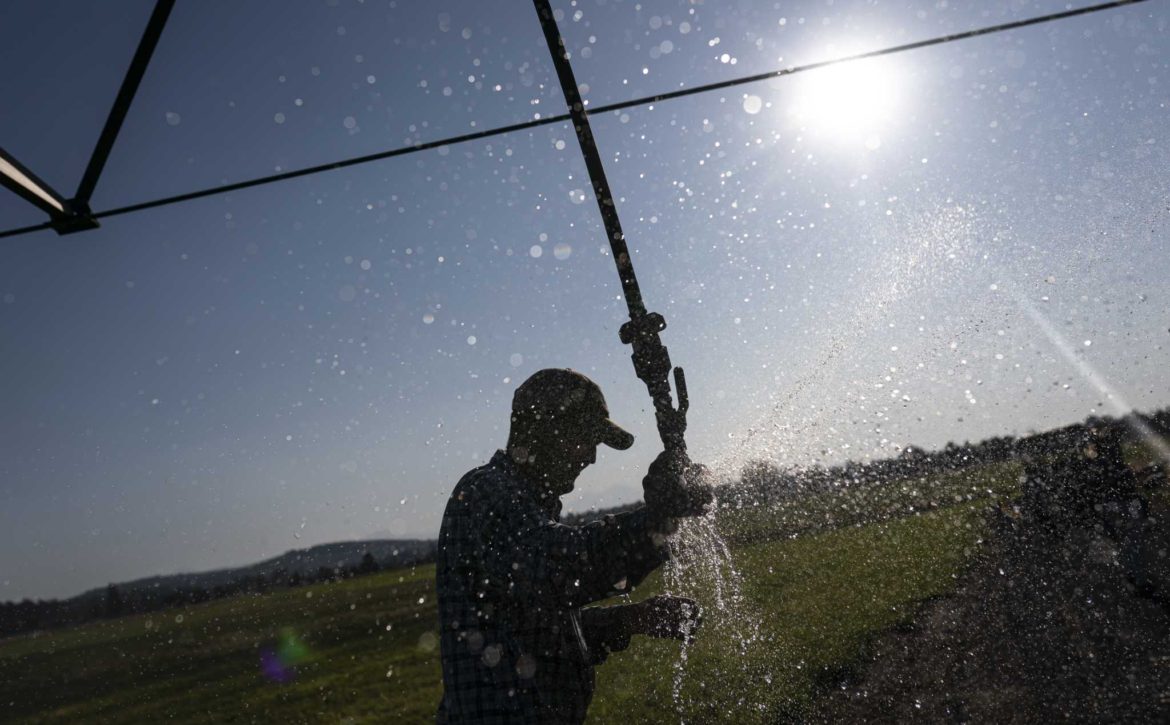
Drought haves, have-nots test how to share water in the West
MADRAS, Ore. (AP) — Phil Fine stands in a parched field and watches a harvester gnaw through his carrot seed crop, spitting clouds of dust in its wake. Cracked dirt lines empty irrigation canals, and dust devils and tumbleweeds punctuate a landscape in shades of brown.
Across an invisible line separating Fine’s irrigation district from the next, it’s another world. Automated sprinklers hiss as they douse crops, cattle munch on green grass and water bubbles through verdant farmland.
In this swath of central Oregon, where six irrigation districts rely on the Deschutes River, the consequences of the strict hierarchy dictated by the American West’s arcane water law — “first in time, first in right” — are written on the land. As drought ravages the West, the districts with century-old water claims are first in line for the scarce resource while others nearby with more recent claims have already run out.
“It’s like the Wizard of Oz. … It’s shocking the difference,” said Matt Lisignoli, a farmer who got nearly five times more water on his land in one irrigation district than on fields in another.
“I’ve learned more about water in the last two months than I have in the last 20 years, because it’s always been here,” he said. “You don’t know until you get in a bind.”
The stark contrast between the haves and have-nots two hours southeast of Portland has brought new urgency to efforts to share water. Proposals to create “water banks” or “water markets” would allow farmers with excess supply to lease it to those in need. The idea is part of a discussion about letting the free market play a bigger role in water conservation as human-caused climate change fuels drought and farmers run out of options.
Yet the concept is fraught with risks and resistance. Larger-scale efforts to…
Read More


